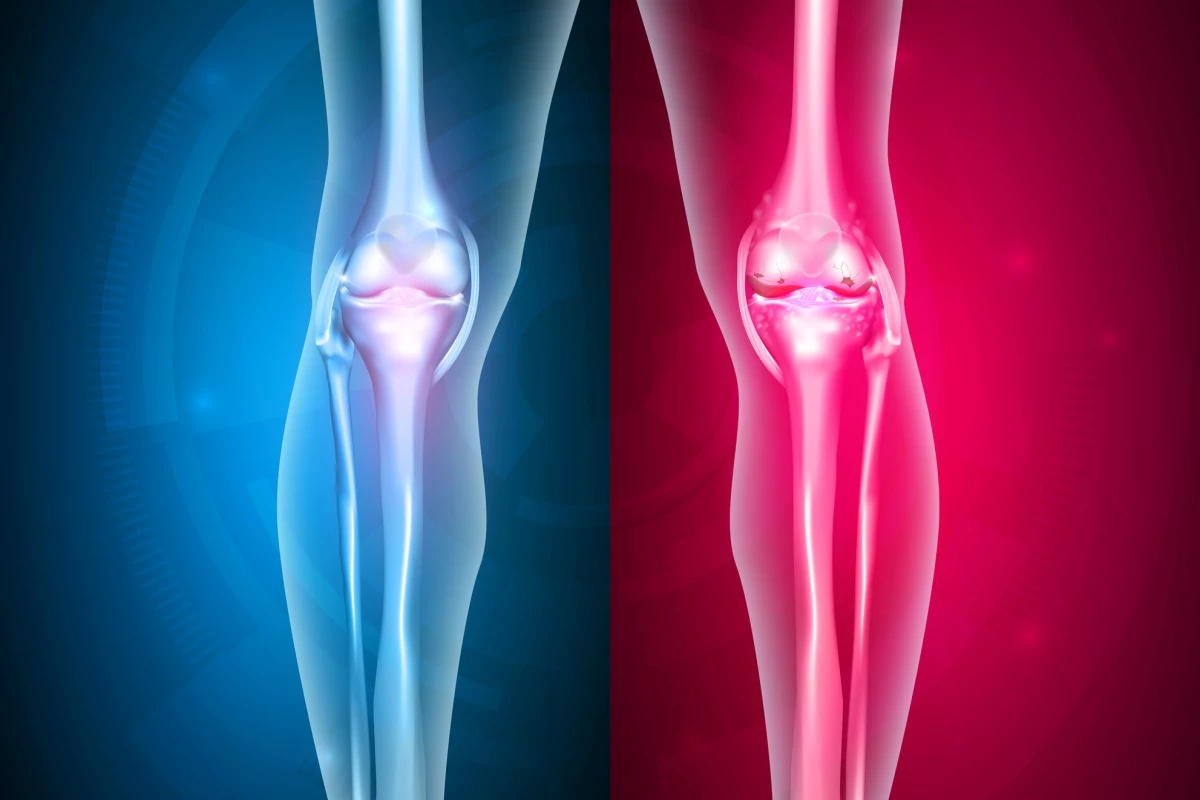Knee and other joint-replacement procedures can be a major improvement to a patient's quality of life – unless infection sets in. A new method of injecting implants with liquid metal aims to take this harmful side effect out of the equation.
While it's true that most joint-replacement surgeries – such as those swapping out damaged hips and knees – go without a hitch, it's been reported that the incidence of periprosthetic joint infection can be as high as 2%. Considering that about 1 million such surgeries take place each year in the United States alone, that's a significant number of patients who can suffer the sometimes devastating effects of infection up to two years after their replacement surgery.
Seeking to improve these outcomes, an international team of scientists, led by researchers at Australia's Flinders University, has created a compound consisting of a bioceramic scaffold embedded with silver-gallium liquid metal. The silver gallium functions as a natural antibacterial agent, and was found in animal testing to fight infection at the joint implantation site. It works by interrupting cellular walls and causing the bacterial cells to leak their contents and die.
The compound was not only shown to be effective against common bacteria such as Staphylococcus aureus, but it also was able to fight off a form of the bug that is drug resistant.
The scaffold was additionally shown to boost fusion with the surrounding bone.
"In our latest research we show our scaffolds significantly reduce bacterial colonisation at implant sites and promote healthy bone integration, confirming both antibacterial efficacy and regenerative capability in a physiologically relevant setting," says lead author Vi-Khanh Truong.
While other joint implants containing antibacterial compounds have been tested, the researchers say their scaffold, which represents the first such model in which liquid metal has been integrated, is significantly different.
"Our approach differs fundamentally from conventional antibiotic-loaded materials," says Flinders postdoctoral researcher Ngoc Huu Nguyen. "Instead of burst release, the scaffold provides sustained, localised antimicrobial protection while actively supporting bone healing."
That said, we have seen a hip implant procedure that makes use of silver and antibiotics to fight infection before. The new implant material, however, eliminates the need for the drugs and uses a liquid, rather than solid, silver compound.
This liquid quality of the new implant material, say the researchers, means it can have a broader range of functions in terms of orthopedic surgery, such as cementing fractures back together again, and working to fill in voids left by tumor resections.
The research has been published in the journal Advanced Functional Materials.
Source: Flinders University





